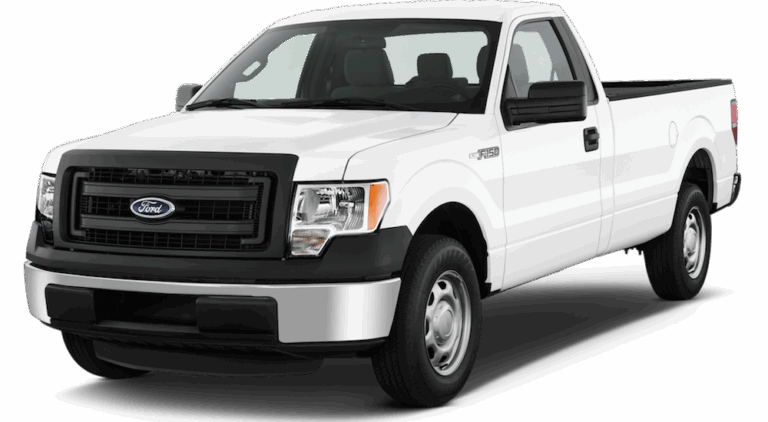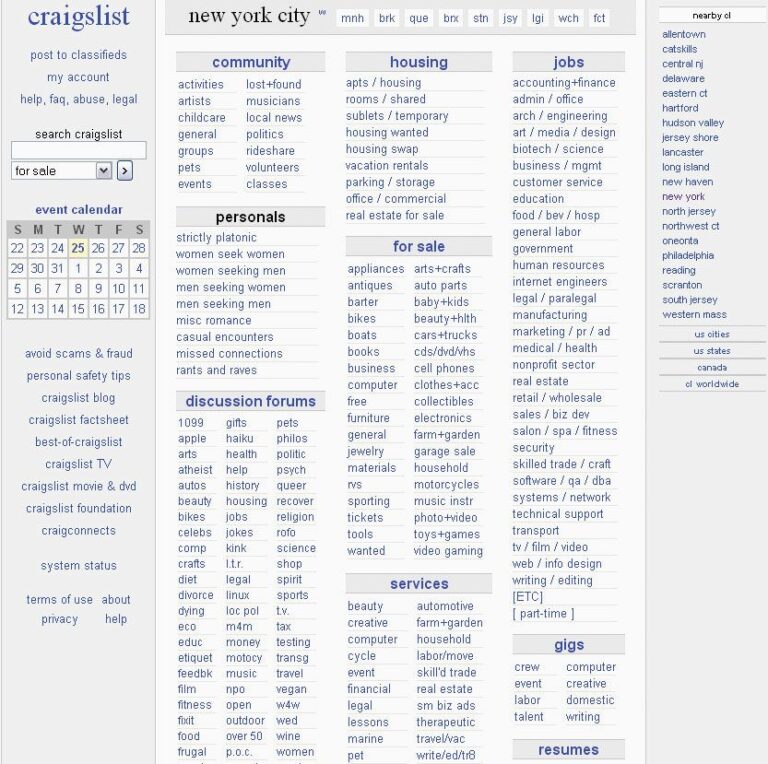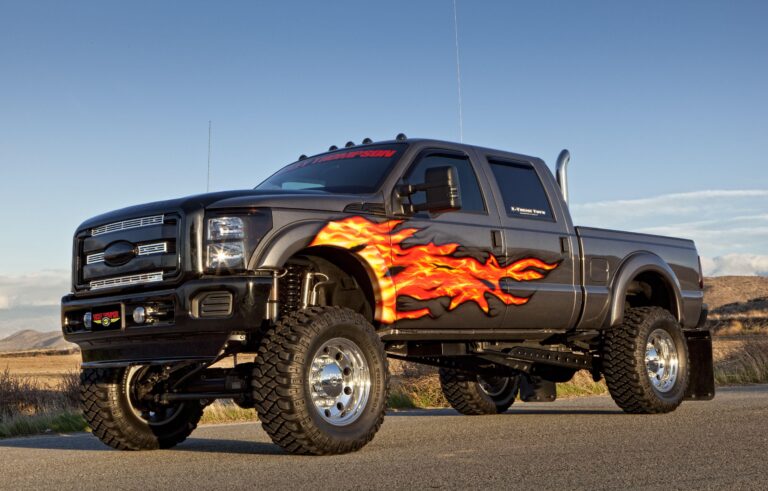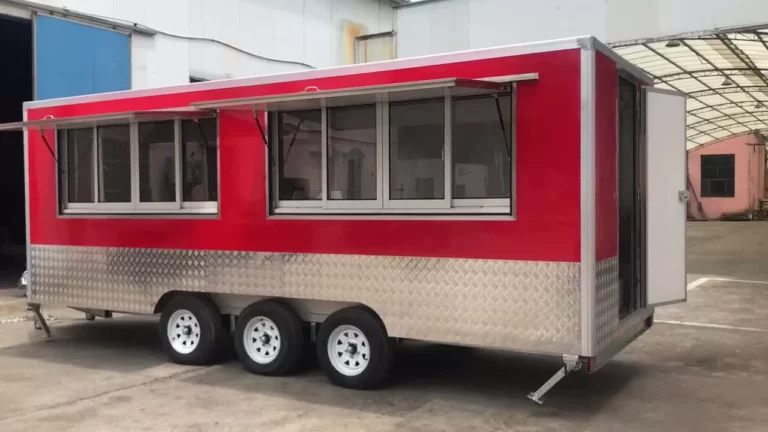70s Ford Trucks For Sale: A Comprehensive Buyer’s Guide
70s Ford Trucks For Sale: A Comprehensive Buyer’s Guide cars.truckstrend.com
In the vast landscape of classic American automobiles, few vehicles command the same nostalgic reverence and practical appeal as the Ford trucks from the 1970s. These workhorses, with their rugged lines, dependable powertrains, and undeniable charisma, have transitioned from utilitarian farm and construction vehicles to highly sought-after collector’s items, project vehicles, and even stylish daily drivers. For anyone looking to own a piece of automotive history that’s as capable as it is iconic, exploring the market for 70s Ford trucks for sale is an adventure well worth embarking upon. This comprehensive guide will navigate you through the enduring charm, key models, essential buying considerations, and the vibrant community surrounding these beloved machines.
The Enduring Allure of the "Dent Side" Era
70s Ford Trucks For Sale: A Comprehensive Buyer’s Guide
The 1970s marked a pivotal era for Ford’s truck division, particularly with the introduction of the sixth-generation F-Series (1973-1979), affectionately known to enthusiasts as the "Dent Side" due to the distinctive body line running along its flanks. These trucks epitomized American resilience and capability, offering a blend of robust engineering and increasingly comfortable interiors. Their appeal today is multifaceted:
- Timeless Design: The "Dent Side" F-Series boasts a design that is both muscular and clean, avoiding the overly ornate styling of some earlier decades. Its straightforward, purposeful aesthetic translates into a classic look that never goes out of style, whether in original paint or a fresh custom finish.
- Unrivaled Durability: Built in an era before extensive plastic components and complex electronics, 70s Fords were engineered for hard work. Their heavy-gauge steel bodies, robust frames, and proven powertrains (like the venerable 300 cubic inch inline-six or the mighty 460 V8) mean many examples are still running strong decades later.
- Mechanical Simplicity: For the DIY enthusiast or those seeking a vehicle that’s easier and less expensive to maintain than modern counterparts, the mechanical simplicity of these trucks is a huge draw. Most repairs can be performed with basic tools and a good service manual, fostering a sense of connection between owner and machine.
- Nostalgia and Heritage: For many, these trucks evoke memories of childhood, family road trips, or hard-earned paychecks. They represent a bygone era of American manufacturing where function often dictated form, creating a strong emotional connection for owners.
- Versatility: From a dedicated show truck to a reliable daily driver, a weekend hauler, or an off-road beast, the adaptability of 70s Ford trucks is unmatched. Their large beds, powerful engines, and available four-wheel drive make them practical for a wide range of uses.

Key Models and Generations of 70s Ford Trucks
While the F-Series dominates the 70s Ford truck landscape, other notable models also contributed to the brand’s legacy.
The 6th Generation F-Series (1973-1979)
This is the star of the show for most 70s Ford truck enthusiasts. Available in various configurations, the F-Series offered something for everyone:
- F-100: The base model, often two-wheel drive, and popular as a lighter-duty work truck or personal transport. Many survivors are F-100s.
- F-150: Introduced in 1975 to circumvent new emissions regulations that applied to light-duty trucks (F-100s), the F-150 had a higher Gross Vehicle Weight Rating (GVWR). This distinction made it incredibly popular, and it quickly became Ford’s best-selling truck. It offered a wider range of engine and trim options.
- F-250 & F-350: These heavy-duty models were built for serious work, offering stronger suspension, heavier axles, and often larger engine options, making them ideal for towing and hauling. Many F-250s were available with Ford’s robust 4×4 system, making them highly desirable for off-road enthusiasts.
- Engine Options: A diverse lineup included the incredibly durable 300 cubic inch inline-six (known for its torque and longevity), various V8s such as the 302, 351M, 360, 390, and the potent 460 cubic inch big block.
- Transmission Options: Manual transmissions (3-speed column shift, 4-speed floor shift) and C4/C6 automatic transmissions were commonly available.
- Trim Levels: From the basic "Custom" to the more upscale "Ranger," "Ranger XLT," and the top-tier "Lariat" (introduced later in the generation), each trim offered increasing levels of chrome, interior appointments, and comfort features.


The Ford Bronco (1978-1979)
While the first-generation Bronco (1966-1977) is a compact icon, the 1978-1979 models represent the second generation – a much larger, full-size SUV built on the F-Series chassis. These Broncos are highly sought after for their rugged 4×4 capability, removable hardtops, and commanding presence, sharing many mechanical components with their F-Series siblings.
The Ford Ranchero (1970-1979)
Ford’s car-based pickup, the Ranchero, continued through the 70s, offering a unique blend of car comfort and truck utility. While not a "truck" in the traditional sense of the F-Series, it’s a distinctive piece of 70s Ford history that appeals to a niche market.
What to Look For When Buying a 70s Ford Truck (Buyer’s Guide)
Purchasing a vintage vehicle requires careful consideration. Here’s a detailed guide to help you find the right 70s Ford truck:
-
Rust, Rust, Rust: This is often the biggest enemy of older vehicles.
- Common Areas: Inspect cab corners, floor pans, rocker panels, wheel wells (especially rear), bed floor, and the frame rails. Pay close attention to the frame where the leaf springs attach.
- Underbody: Get under the truck if possible. Look for patched areas, excessive undercoating (which can hide rust), and structural integrity.
- Drain Holes: Check if drain holes in the doors and bed are clear; clogged holes lead to trapped moisture and rust.
-
Engine and Transmission:
- Cold Start: Ideally, hear the engine start cold. Listen for knocking, excessive smoke (blue for oil, white for coolant), or unusual noises.
- Fluid Leaks: Check for oil, transmission, coolant, and power steering fluid leaks.
- Transmission: For automatics, check for smooth shifting, no harsh clunks. For manuals, ensure the clutch engages smoothly and gears don’t grind.
- Power & Driveability: Take it for a test drive. Does it accelerate smoothly? Does it pull to one side? Are the brakes effective?
-
Chassis and Suspension:
- Steering Play: Excessive play in the steering wheel indicates worn steering components (steering box, tie rods, ball joints).
- Bushings & Shocks: Look for cracked or deteriorated suspension bushings. Test the shocks by pushing down on each corner of the truck – it should rebound once or twice, not bounce excessively.
- Brakes: Ensure the pedal feels firm and the truck stops straight without pulling.
-
Interior Condition:
- Seats & Dash: Check for rips, tears, cracks, and overall wear. Original interiors in good condition add value.
- Gauges & Electrical: Test all lights, wipers, horn, heater/AC (if equipped), radio, and gauges. Electrical issues can be tedious to trace.
- Water Leaks: Look for signs of water intrusion around windows, door seals, and the windshield.
-
Documentation and History:
- Ensure the title is clean, matches the VIN on the truck, and is in the seller’s name.
- Service Records: Any records of maintenance, repairs, or restoration work are a huge plus.
- VIN Decoding: Use the VIN to verify the original engine, transmission, and trim level.
-
Originality vs. Modified: Decide what you want. A highly original, low-mileage survivor will command a premium. A modified truck with engine swaps, lift kits, or custom paint might appeal to others. Projects are cheaper but require significant time and money.
-
Pre-Purchase Inspection (PPI): If you’re serious about a truck, especially one from a distance, invest in a PPI by a trusted mechanic familiar with classic vehicles. It’s the best way to uncover hidden issues.
Restoration, Customization, and Maintenance
Owning a 70s Ford truck is often a journey of ongoing care and personalization.
- Restoration: A full frame-off restoration can be costly and time-consuming, involving bodywork, paint, engine/transmission rebuild, and interior overhaul. However, the result is a show-quality vehicle that can appreciate significantly.
- Customization: The aftermarket support for these trucks is immense. Popular modifications include engine swaps (e.g., modern Coyote V8, Cummins diesel), suspension lifts or drops, modern braking systems, air conditioning upgrades, and interior refreshes with modern sound systems.
- Maintenance: Thanks to their robust design, basic maintenance is relatively straightforward. Regular oil changes, fluid checks, tune-ups, and inspection of wear items will keep these trucks running reliably for years. Parts availability is generally good for mechanical components, though specific trim pieces or rust-free body panels can sometimes be a challenge.
Where to Find 70s Ford Trucks For Sale
The market for these trucks is vibrant:
- Online Marketplaces: eBay Motors, Craigslist, Facebook Marketplace, and dedicated classic car sites like Hemmings, ClassicCars.com, and Bring a Trailer are excellent starting points.
- Auctions: Major auction houses (Mecum, Barrett-Jackson) often feature high-end restored examples. Local classic car auctions can also yield good finds.
- Specialty Dealers: There are dealers who specialize in vintage trucks, often offering restored or well-maintained examples, though usually at a higher price point.
- Word-of-Mouth & Car Shows: Networking within the classic truck community and attending local car shows can uncover hidden gems.
Investment Potential and Market Trends
The value of 70s Ford trucks has been steadily appreciating, especially for well-preserved or professionally restored examples. Factors influencing value include:
- Condition: Pristine, rust-free, original, or professionally restored trucks command the highest prices.
- Rarity/Configuration: Certain engine/transmission combos (e.g., 4×4 with a big block and manual transmission), rare trim levels, or unique body styles (like the ’79 F-150 Ranger Lariat with two-tone paint) can fetch higher bids.
- Provenance: Documented history, original build sheets, or low mileage can significantly increase value.
While not all 70s Ford trucks will make you rich, they often hold their value well and provide immense enjoyment, making them a tangible asset and a fantastic hobby.
Price Table: 70s Ford Trucks For Sale (Estimated Ranges)
Please note that these are general estimates and actual prices can vary significantly based on location, seller, specific features, and market demand.
| Model / Year Range | Condition: Project / Parts | Condition: Driver Quality | Condition: Good / Solid | Condition: Excellent / Show | Key Notes / Features |
|---|






